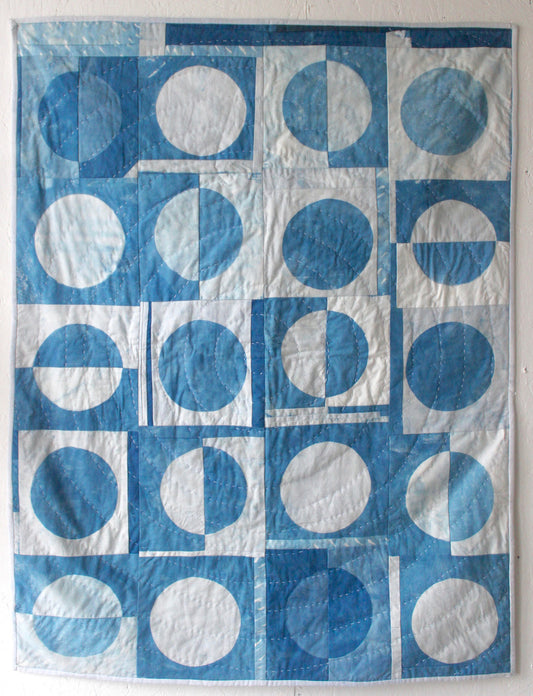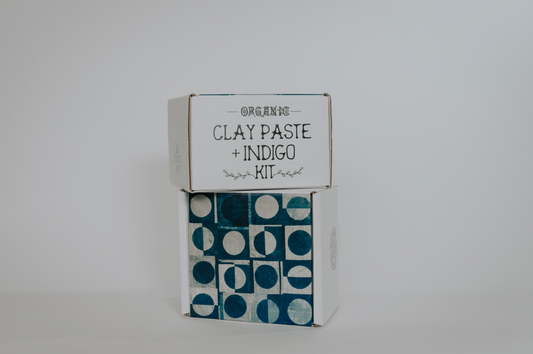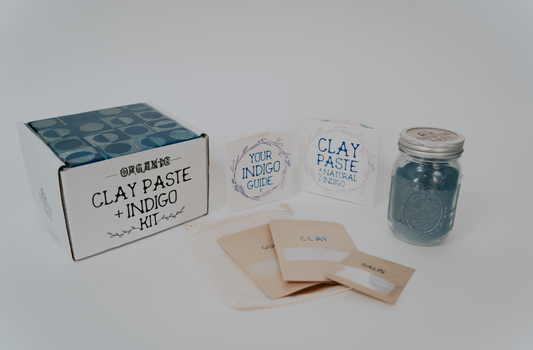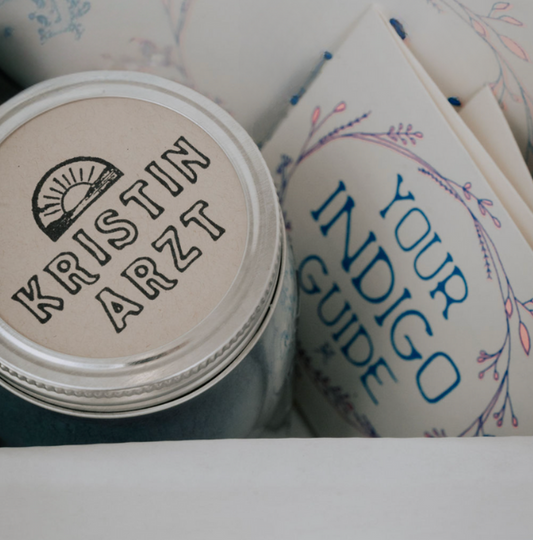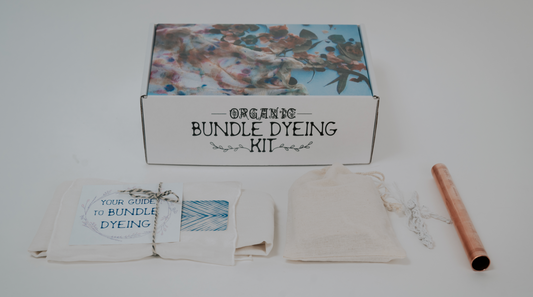When paired with soy milk as a binder, clay can be used to stain cloth in earthy, mineral-rich colors. Unlike traditional dyes that chemically bond with fiber, clay pigments sit on the surface. Whether you're working with any local soil or iron-rich clays, this process offers you a hands-on connection to place and material. In this guide, I’ll walk you through the steps to create your own clay-dyed fabric.
Soy milk acts as a binding agent to help the clay pigment adhere to the fabric. Clay is a pigment that sits on the surface of the fiber–we are staining more than we are dyeing the fiber. (As opposed to a dye that actually penetrates the fiber, chemically bonding the pigment and fiber with the help of a metal salt/mordant).

1. Prep:
- Choose your clay. It could be color-focused (ie. red, green, black clays), or even tannin rich (if your soil is rich in composted leaf matter).
- Pre-wet your fabric with water to help the dye absorb evenly. Soak it in freshly made soy milk before mixing in the clay.
- Make your soy milk. Here is the recipe outlined in Catharine Ellis and Joy Boutrups’ The Art and Science of Natural Dyes: Cover 25 grams dry soybeans with water and soak overnight. The next day, strain and rinse the beans. Add the soaked beans to a blender with 500 ml water. Blend for 5-7 minutes. Strain and squeeze the pulverized beans through a mesh bag or muslin straining cloth. Fresh soy milk can be kept sealed in the fridge for 2 to 3 days. This makes about 400 ml of fresh soy milk. You can size up as needed.
-
Optional: Pre-treat your fiber in a tannin solution for one hour. Collect leaves (black walnut or sumac leaves are tannin rich), acorns, oak galls, etc. Then, add this material to water and simmer it for about one hour. Add your fiber to be dyed and soak in the tannin for one hour. This can result in deeper colors. For example, if the clay you are using is iron-rich, iron interacts with tannin to create deep, saddened tones

2. Dye:
- Mix your dye using ~2 cups soy milk and ¼ cup clay. Make sure you have enough to fully cover the fabric so it can move freely in the liquid.
- I like to use a square bin so the fabric is unfolded in the container. If it is folded/scrunched up in a smaller bowl, that also works, but you will get a less evenly applied saturation of dye.
- Submerge the prepped fabric into the soy milk and clay mixture.
- Allow the fabric to soak for at least one hour, potentially overnight, stirring occasionally to ensure even coverage. If it is overnight, it is a good idea to fit your container in a fridge. Stir it about every hour.

3. Curing and Washing:
- Take the fabric out of the clay/soy mixture and hang it to dry out of the direct sun. Let the fabric cure for a week before washing to allow the color to fully set.
- After a week, rinse it in a bucket of water to remove the clay, then wash under running water. Wash it with a mild soap.
- Dry the fabric - hang dry or in the dryer.
The results are subtle and textural, informed by your choice of clay, fiber, and the soil’s mineral makeup. Whether you're just starting to experiment or adding clay to your existing natural dye practice, I hope this guide helps you tap into earth-based color.

Further Reading and Resources:
- “Dr. Dirt’s Dirt Shirt” https://cdrdirt.com/dirt-shirt-recipe
- John Marshall’s article on “Dorozome: Japanese mud dyeing” in Turkey Red Journal: https://pamelafeldman.com/archives/V17_I1/Marshall.html
- Judy Dominic’s article on “Bogolan Fini from Mali, Africa” in Turkey Red Journal: https://pamelafeldman.com/archives/V17_I1/Dominic.html
- Kimberly Baxter Packwood “Rust and Clay Dyeing ebook” https://kbaxterpackwood.com



